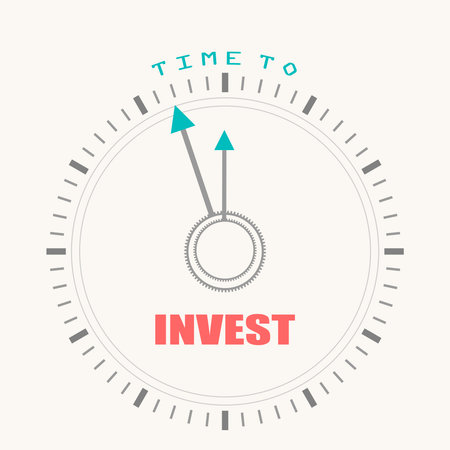1. Introduction to Bitcoin Mining
Bitcoin mining is the backbone of the entire Bitcoin network—a digital gold rush that’s captured the imagination and wallets of Americans from Silicon Valley techies to rural entrepreneurs. But what exactly is Bitcoin mining, and why does it matter? At its core, Bitcoin mining is the process by which new bitcoins are created and transactions are verified on the blockchain. Miners use specialized computers to solve complex mathematical problems, securing the network and earning rewards in the form of freshly minted bitcoins. This process isnt just about making money; it’s fundamental to maintaining trust and transparency in a decentralized system without banks or governments calling the shots.
The importance of mining goes beyond personal profit. Without miners, there would be no way to validate transactions or prevent double-spending, making Bitcoin unreliable as a currency. The idea originated with Bitcoin’s mysterious creator, Satoshi Nakamoto, who launched the first-ever block—the Genesis Block—in 2009. Since then, mining has evolved from hobbyists using home computers to full-scale industrial operations across the US, especially in states like Texas and Wyoming where cheap energy fuels massive data centers. In America, Bitcoin mining represents not only technological innovation but also a new frontier for financial freedom—an opportunity for everyday people to participate in a global monetary revolution.
2. How the Bitcoin Mining Process Works
If you’ve ever wondered how Bitcoin mining actually works, let’s break it down with some good old-fashioned American analogies and real-life examples. Think of Bitcoin mining like participating in a high-stakes lottery, but instead of buying tickets, you use computing power to solve complex puzzles.
Step 1: Gathering Transactions (Like Collecting Receipts at a Store)
Every time someone sends or receives Bitcoin, that transaction needs to be recorded. Miners act like cashiers at your favorite grocery store, collecting all the receipts (transactions) during their shift (about every 10 minutes). These receipts are bundled together into what’s called a “block.”
Step 2: Solving the Puzzle (A Digital Raffle)
Now, imagine there’s a giant Powerball drawing every ten minutes. To get your block of receipts added to the official ledger (the blockchain), miners compete to solve a math puzzle. This puzzle isn’t solved by smarts—it’s all about luck and computing horsepower, much like having more raffle tickets increases your odds of winning.
Puzzle Analogy Table
| Bitcoin Mining Step | American Analogy |
|---|---|
| Collecting Transactions | Cashier gathering receipts |
| Solving the Puzzle | Entering a raffle with lots of tickets |
| Winning the Block Reward | Winning the Powerball jackpot |
Step 3: Adding the Block to the Chain (Updating the Ledger Book)
If your computer solves the puzzle first, you get to add your block of transactions to Bitcoin’s public ledger—think of this as updating the master ledger book at a bank. Everyone else checks your work before accepting it, ensuring honesty and accuracy.
Step 4: Earning Rewards (Getting Paid for Your Hard Work)
The lucky miner who wins gets rewarded in two ways: new bitcoins (the “block reward”) and transaction fees from all those collected receipts. It’s like getting paid a bonus plus tips for balancing the books at closing time.
Quick Recap Table: The Mining Workflow
| Stage | Description | Analogy |
|---|---|---|
| Transaction Collection | Gather recent transactions into a block | Collecting daily sales receipts |
| Puzzle Solving | Solve complex mathematical problems using computers | Powerball raffle entry with more tickets = better chance |
| Add Block to Blockchain | Add verified block to public record after consensus check | Updating master ledger after peer review |
| Receive Rewards | Earn bitcoin and transaction fees for successful mining | Receiving salary plus tips after balancing cash register |

3. Mining Hardware and Tech Setup
If you’re thinking about diving into Bitcoin mining in the United States, understanding the nuts and bolts of the operation is key. The right hardware, a solid tech setup, and a grasp of energy requirements are all crucial pieces of the puzzle.
Choosing Your Equipment
Bitcoin mining isn’t something you can do on your old laptop anymore. Today, serious miners use specialized devices called ASICs (Application-Specific Integrated Circuits). These machines are designed solely for mining Bitcoin and can crunch numbers far faster than standard computers or even high-end gaming rigs. Popular ASIC brands like Bitmain’s Antminer series or MicroBT’s WhatsMiner dominate the market. When picking equipment, consider factors like hash rate (how fast it solves problems), power efficiency, reliability, and upfront costs.
Energy Demands: Powering Up
Mining is an energy-hungry business. In fact, electricity costs often make or break your profitability. In the US, energy rates vary widely by state—miners flock to places like Texas or upstate New York for access to cheaper or renewable electricity. A single ASIC miner can consume as much power as several refrigerators running non-stop, so you’ll need to factor this into your location choice and budget.
Setting Up Your Operation
Once you have your hardware and a source of affordable power, you’ll need a reliable internet connection—downtime means lost revenue. Cooling systems are another must-have; mining rigs generate a ton of heat, so many miners set up dedicated ventilation or even build out warehouse-style operations to keep things running smoothly. You also need basic networking know-how to connect your miners to a pool (a group that combines computing power to share rewards) and maintain security against hacks or malware.
The Tech Know-How
While you don’t need to be a Silicon Valley engineer, some tech savvy definitely helps. From firmware upgrades to troubleshooting network issues and monitoring performance with mining management software, there’s always something to tinker with. Many US miners join online communities for support, sharing tips on optimizing setups and navigating the challenges unique to American regulations and energy markets.
Getting started in Bitcoin mining takes more than just plugging in a machine—it’s about strategic planning, technical skill, and a willingness to adapt as technology and the industry evolve. With the right approach, you could find yourself one step closer to financial freedom through crypto.
4. How Miners Get Rewarded
Understanding how Bitcoin miners earn their rewards is crucial to grasping the entire mining ecosystem, especially for anyone in the U.S. considering this as a path toward financial independence. Miners receive compensation primarily through two channels: block rewards and transaction fees. Over time, these incentives have evolved, impacting how U.S.-based miners approach the business of mining.
Block Rewards: The Foundation of Mining Earnings
When a miner successfully adds a new block to the Bitcoin blockchain, they are awarded a set number of newly minted bitcoins. This is called the block reward. In the early days, this reward was 50 BTC per block, but thanks to an event called “halving,” it decreases roughly every four years. As of 2024, U.S. miners receive 3.125 BTC per block.
| Year | Block Reward (BTC) | USD Value (Approx., at $60,000/BTC) |
|---|---|---|
| 2009 | 50 | $3,000,000 |
| 2016 | 12.5 | $750,000 |
| 2024 | 3.125 | $187,500 |
Transaction Fees: Supplementing Miner Income
Besides block rewards, miners also collect transaction fees from users who want their transactions processed quickly. Each time someone sends bitcoin, they can attach a fee to incentivize miners to include their transaction in the next block. For U.S.-based miners operating large-scale facilities, these fees can be significant during times of network congestion—sometimes making up a substantial portion of total mining income.
Example: Fee Opportunities During High Demand
Imagine a sudden surge in trading on U.S.-based crypto exchanges like Coinbase or Kraken. The spike leads to higher transaction fees as users compete to have their transactions confirmed first. In May 2021, during one such frenzy, average transaction fees briefly soared above $60 per transaction—substantially boosting miner revenues even as block rewards continue to decrease.
The Evolution of Mining Incentives in the U.S.
The shift from reliance on block rewards to greater dependence on transaction fees is shaping mining strategies across America. Early adopters in Texas or Wyoming once banked on high BTC payouts; now, they focus more on operational efficiency and access to low-cost energy to stay profitable as rewards shrink and competition grows.
Summary Table: Evolving Miner Rewards
| Incentive Type | Description | Current Role for US Miners |
|---|---|---|
| Block Rewards | Newly created bitcoins awarded for each mined block; halves every four years. | Main source of revenue but decreasing over time. |
| Transaction Fees | User-paid fees included with each transaction; fluctuate based on network demand. | Becoming increasingly important for profitability. |
This evolving reward structure means that U.S.-based miners must continuously adapt—whether by investing in more efficient hardware or by relocating operations to areas with cheaper electricity—to sustain their journey toward financial freedom through Bitcoin mining.
5. Biggest Challenges for American Miners
If you think Bitcoin mining in the U.S. is a golden ticket to financial freedom, think again. The reality? American miners face some serious obstacles every day, and understanding these challenges is key before jumping into the game.
Energy Costs: The Power Struggle
Let’s start with the big one—energy costs. Mining Bitcoin takes a lot of electricity, and in America, rates can vary wildly by state. If you’re not based somewhere with cheap, reliable power (think Texas or parts of the Midwest), your profit margins shrink fast. Some miners even relocate across state lines just to keep their rigs running at a reasonable cost.
Regulation: Rules and Uncertainty
The U.S. doesn’t have a single set of rules for crypto mining; every state has its own policies, and federal regulations are evolving constantly. Sometimes, local governments crack down on mining operations over environmental concerns or grid pressure. This regulatory uncertainty makes it risky to invest heavily in equipment or infrastructure—miners always have to be ready for new rules or restrictions that could hit their business overnight.
Competition: Racing Against Giants
Mining isn’t just about plugging in a machine and watching Bitcoin roll in. You’re competing against massive operations with warehouses full of high-tech hardware. These big players can negotiate better electricity rates and buy equipment in bulk, giving them an edge over smaller, independent miners trying to break in.
Staying Afloat: Adapt or Die
In this landscape, American miners have to get creative—joining mining pools, investing in energy-efficient gear, or finding ways to use renewable energy sources. It’s a constant hustle to stay profitable while dealing with rising competition and shifting regulations.
The Bottom Line
Bitcoin mining in America is no walk in the park. Between soaring energy prices, unpredictable laws, and stiff competition, only the most resourceful—and persistent—miners thrive. But for those who navigate these hurdles successfully, the rewards can still be life-changing.
6. Is Bitcoin Mining Still Worthwhile?
If you’re considering diving into Bitcoin mining, you might be asking the million-dollar question: is it still worth it? The answer depends on your appetite for risk, your financial goals, and your willingness to adapt to an ever-changing landscape. Let’s break down the reality of mining in America today.
The Risk vs Reward Equation
Bitcoin mining was once a gold rush—early adopters with basic computers could strike digital gold from their garages. Fast forward to 2024, and the game has changed. Now, industrial-scale operations dominate the scene, squeezing out small miners with massive investments in hardware and access to cheap electricity. However, stories still surface of individuals who started small and scaled up, leveraging smart strategies and joining mining pools for steadier rewards.
Financial Freedom Potential
The dream of achieving financial freedom through Bitcoin mining resonates with the American spirit—think of it as a modern-day California Gold Rush. Some U.S. miners have managed to pay off mortgages or fund college tuition from their crypto earnings. According to a recent study by Cambridge University, North America accounts for nearly 38% of global Bitcoin mining activity, with states like Texas and Wyoming leading the charge due to favorable energy costs and regulations.
Real Stories: Chasing the American Dream
Take the story of Mike from Ohio—a former factory worker who invested his savings into a handful of ASIC miners in his basement. By carefully monitoring electricity rates and reinvesting his profits, he turned his side hustle into a six-figure business within three years. On the flip side, there are cautionary tales of folks who lost big when Bitcoin prices dipped or when regulatory changes increased operating costs overnight.
Challenges You Can’t Ignore
Mining is not without its hurdles: rising hardware costs, fluctuating Bitcoin values, increasing network difficulty, and potential legal uncertainties can all eat into profits. Plus, the environmental impact is under growing scrutiny in the U.S., leading some states to introduce stricter regulations.
The Bottom Line
Is Bitcoin mining still worthwhile? For most Americans, it’s no longer an easy path to riches. But for those willing to innovate, manage risks wisely, and stay adaptable, mining can still offer a route toward financial independence—echoing that classic American dream of building wealth through grit and ingenuity.


